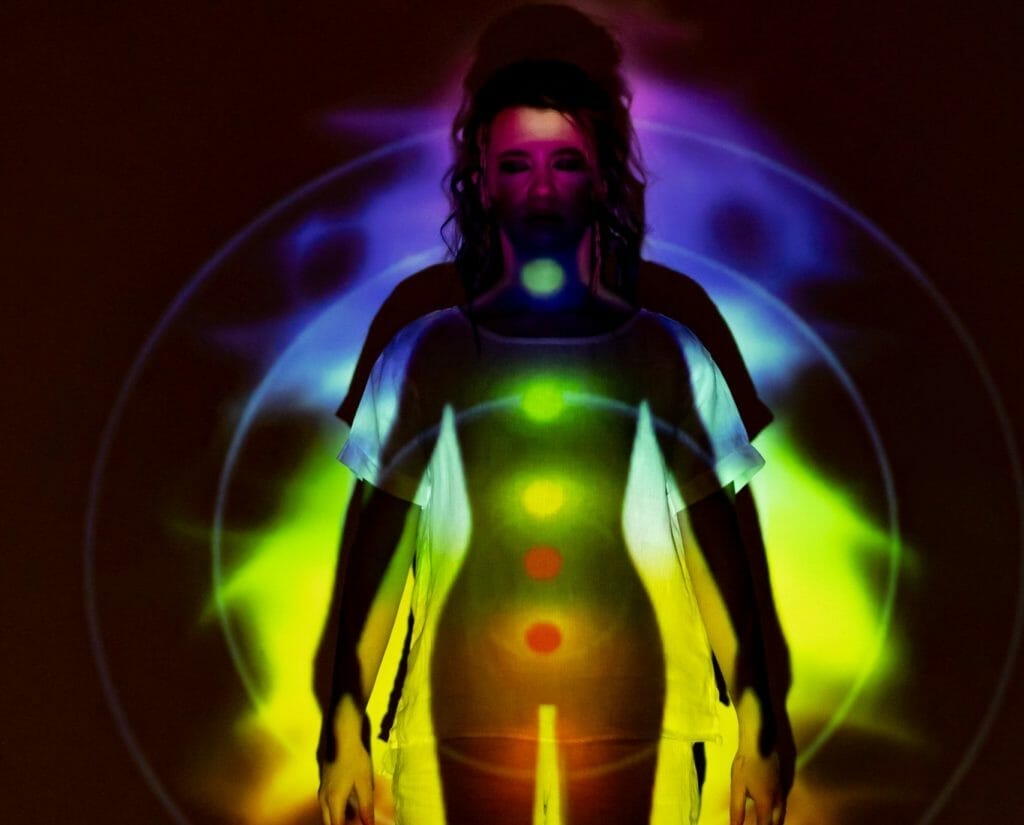Understand Your Sacral Chakra (Svadhisthana): The Ultimate Guide
Often referred to as Svadhisthana – Sanskrit for ‘dwelling place of the self’ – this powerful chakra has a critical role in both our physical and spiritual well-being. This post will guide you through everything there is to know about balancing this second energy center: what it signifies, how its imbalance affects us physically and emotionally, and most importantly – ways that we can restore harmony to it.
Sacral Chakra Key Characteristics
Chakra: Second
Sanskrit name: Svadhisthana (dwelling place of the self)
Function: Expression of emotion, creative energy, and sexuality
Emotions: Passion, pleasure, passion, inspiration, intimacy
Location: Lower abdomen, about two inches below the navel
Organs: Reproductive organs, kidneys, bladder, lower back and hips
Sense: Taste
Element: Water
Color: Orange
Beej Mantra: Vam
Mudra: Shakti
Yantra: Six-petalled lotus with a silver-crescent moon
Solfeggio Frequency: 417 Hz
Crystal: Carnelian
Affirmation: “I feel able to express my emotions, creativity, and sexuality.”
Spirit Animal: Crocodile
What is the Sacral Chakra?
The sacral chakra, also known as Svadhisthana in Sanskrit, is the second chakra of the seven primary energy centers in the body. It is located in the lower abdomen and is responsible for regulating emotions, pleasure, creativity, sensuality, fertility, and sexuality.
The sacral chakra is associated with the element of water, symbolising the fluidity and constant moving nature of our emotions, and the color orange, which embodies the playful, creative, and inviting nature of the sacral chakra.
The sacral chakra is where our inner world meets with the external world – it is the center of creative energy and emotion, enabling us to form relationships, connect with others, and be open to new experiences. It is responsible for our sense of abundance, well-being and joy – all essential aspects of physical and emotional well-being.
Meaning of Sacral Chakra Yantra – The Six-Petalled Lotus
Yantras, also known as ‘Mandalas’ in Sanskrit, are divine figures, used in Tantric practices to connect with the divine energy of the universe. The sacral chakra yantra is a six-petalled lotus, where each of the petals of the lotus contains one of the ba, bha, ma, ya, ra, and la Sanskirt letters. At the centre of the lotus contains the seed/beej manta vam. The element water is represented as a silver crescent moon.
Credit: Mirzolot2
Sacral Chakra Functioning
At its optimal functioning, the sacral chakra offers an overall sense of health, joy, and abundance in life. It helps us feel and express our emotions, our creative energy, and our sexuality so that we feel connected to the people and the world around us. When balanced, the sacral chakra means one is fully connected to their body, enabling one to fully experience the pleasures of life, whilst also setting healthy boundaries.
When the sacral chakra is functioning properly, one may also experience physical benefits such as improved digestion, increased fertility, balanced hormones, and better circulation. The muscles may also feel more relaxed and flexible, allowing for a greater range of motion.
Sacral Chakra Imbalances
A sacral chakra imbalance can occur for many different reasons, ranging from physical and lifestyle issues to more difficult-to-identify spiritual or emotional blocks.
Physically, sacral chakra imbalances may be caused by dehydration, malnutrition, cystitis, or imbalances in hormones such as estrogen or progesterone.
Other possible causes include unhealthy relationships and unresolved emotions around sexuality, self-expression, creativity and personal power. General stress, both mental and physical also plays a role in sacral chakra imbalances.
Emotional Symptoms of a Sacral Chakra Imbalance
- Difficulty expressing emotions
- Lack of creative inspiration
- Difficulty experiencing pleasure
- Insecurity
- Anxiety
- Fear of change
- Difficult relationships
- Overly attached (overactive sacral chakra)
- Too much energy/restlessness (overactive chakra)
Physical Symptoms of a Sacral Chakra Imbalance
- Lower back pain
- Low energy
- Joint problems
- Digestive issues
- Urinary tract infections
- Kidney issues
- Reproductive issues
- Low libido
Techniques for Sacral Chakra Healing
Having a balanced sacral chakra is critical to our emotional and physical well-being. Not only does it govern our emotions and bring us joy when it’s working in harmony with our body, but it is also inextricably connected with the rest of the chakras. When one is out of balance, it risks the rest falling out of order as well, leaving us in a vulnerable physical and emotional state.
Making sure your sacral chakra is balanced is essential for finding pleasure in life and meeting all areas of your life—personal or professional—with full emotional capacity.
Meditation
Vizualization meditation. Sit in a comfortable position and close your eyes. Visualize a golden light radiating from the area around your sacral chakra. As you focus on this light, take deep breaths and allow yourself to relax. Feel the life force energy of the light moving throughout your body, bringing balance to both your physical and emotional state. Continue visualizing until you feel balanced, then open your eyes when you are ready.
Chanting meditation. Beej mantras possess great powers when it comes to unlocking the chakras, and the ‘vam’ mantra corresponds to the sacral chakra, in particular. To begin, sit in a comfortable position and close your eyes. Focus on your breath and allow yourself to relax. Begin repeating the mantra ‘vam’ out loud or silently. As you do this, visualize a silver crescent placed over your sacral chakra. Feel its energy moving throughout your body, bringing balance to both your physical and emotional state. Continue this meditation for about 20 min or until you feel balanced or a sense of inner peace settling in. Open your eyes when you are ready.
Yoga
To bring balance to your sacral chakra through yoga poses, focus on poses that open or activate your pelvic and lower abdomen areas. It is also important to connect this physical activity with awareness of its deeper purpose by connecting with sensations within the body and allowing yourself the opportunity for self-reflection during this practice.
A few yoga asanas that can be beneficial include:
- Warrior pose
- Goddess Pose
- Frog Pose
Affirmations
Chakra affirmations are positive statements, that, when repeated regularly, can have a restoring effect on the body and mind. They can also be helpful to look inward and reflect on the emotions associated with the sacral chakra. To get into the habit of affirmations, set aside a specific time each day to repeat them, either out loud or in your mind.
Some examples of sacral chakra affirmations are:
- “I am open to pleasure and joy in my life.”
- “I am connected to my creativity and emotions.”
- “I express my true self with love and understanding.”
Essential Oils
Essential oils and the practice of aromatherapy are two ancient healing techniques that promote balance and health within the sacral chakra. Some essential oils beneficial for sacral chakra balancing and healing are:
- Sandalwood
- Patchouli
- Rosemary
- Ylang-ylang
- Geranium
- Clary sage
- Jasmine
- Rose
Crystals and Stones
Various healing crystals and stones can be used to create a bridge to the sacral chakra. When selecting a crystal, look for ones that you feel a special connection with — this is a sign that it is connected to your energy vibrations. During meditation, hold your chosen crystal in your hand as you focus on allowing energy to flow through your sacral chakra, so that any mental blockages or stress impairing this chakra are cleared away. Some example crystals for sacral chakra balancing include:
- Carnelian
- Citrine
- Orange calcite
- Moonstone
- Tiger’s eye
- Amber
417 Hz Solfeggio Frequency
Through the power of sound vibrations, the solfeggio frequencies can restore harmony, balance and equilibrium in our bodies. 417 Hz is one such frequency, and it has been said to be deeply connected to the sacral chakra. You can listen to the 417 Hz frequency below:
Sacral Chakra Mudras
Mudras have been a part of Hindu and Buddhist rituals for thousands of years. Typically used during meditation, they are simple hand gestures that can intensify the flow of life force energy throughout the body.
The Shakti mudra has a calming effect on the body and is most often associated with the sacral chakra. To do this mudra, place your palms in front of your belly and fold your fingers into a fist, around the thumb. Extend the ring and small finders so that the fingertips are touching.
Foods
Eating the right types of food is an easy way to keep your sacral chakra in check. Since the sacral chakra is associated with the color orange foods like oranges, apricots, carrots, peaches, mangos, squash, pumpkin, and sweet potatoes can be beneficial. Notably, eating foods that are high in fibre will also help, as the digestive system is one of the key organs associated with the sacral chakra.
FAQs
How do you know if your sacral chakra is unbalanced?
If your sacral chakra is unbalanced, you may experience physical symptoms, such as lower back pain, digestive issues, frequent urinary tract infections, and reproductive issues. Emotionally, you may feel disconnected from yourself and others, and experience difficulty expressing emotions or experiencing pleasure. You may also find that you are overly attached to people or possessions.
What are the symptoms of the sacral chakra opening?
When the sacral chakra is opening, you may experience physical sensations such as warmth or tingling in the lower abdomen. Emotionally, you may feel more connected to yourself and others, experience increased creativity and self-expression, and have an overall feeling of contentment and joy. You may also find that it’s easier to go with the flow of life and accept change.
What weakens the sacral chakra?
The sacral chakra can be weakened by negative emotions such as fear, guilt, and shame, as well as physical issues such as digestive problems or reproductive issues. Unhealthy relationships and unhealthy lifestyle habits such as drug and alcohol use can also weaken the sacral chakra.










